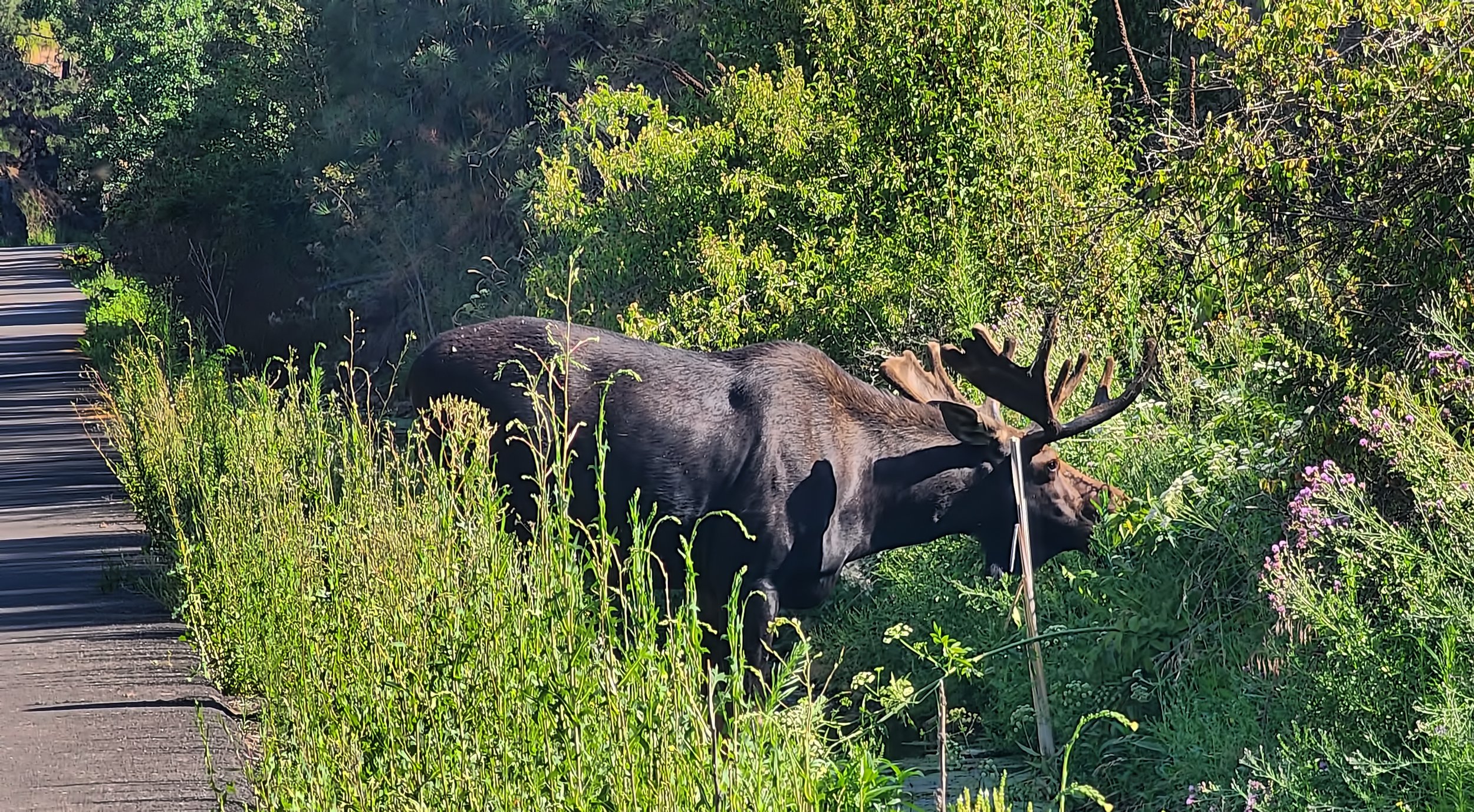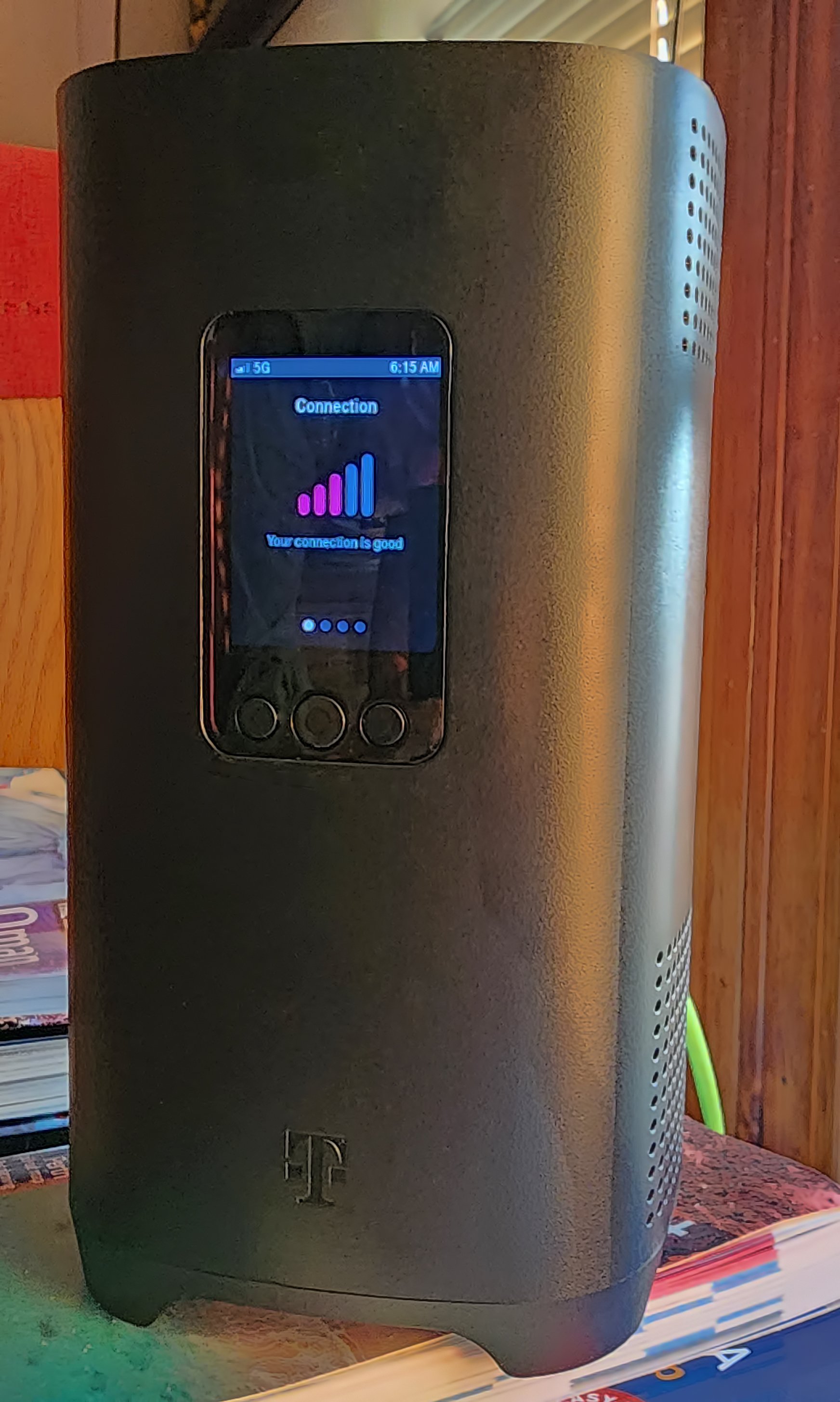for the camera is an absolutely impossible task.
A grumpy painted turtle (Chrysemys picta).
for the camera is an absolutely impossible task.

A grumpy painted turtle (Chrysemys picta).

in the creek while Mom keeps a watchful eye nearby.

Mallard Duck chick (Anas platyrhynchos).

This is the mamma Mallard, named Minnie.
on the Fish Lake Trail this morning! Huge and magnificent beast!

Bull moose (Alces alces).

These snaphots were made with my smartyphone camera from about 35 yards/meters away.

Mallard or Wild Duck (Anas platyrhynchos).

Happy duckling!
carrying breakfast back to the family burrow early this morning along Minnie Creek. Quite amusing to observe as it calmly paddled by on its mission.

Muskrat (Ondatra zibethicus).
early this morning. Its blooms slowly march up the tall stem through the summer, reaching the apex as the first frost approaches. Looks like we have a while to go.

Fireweed (Chamaenerion angustifolium), also known as great willowherb north of the border.
was in use by the operators of the Spokane, Portland and Seattle Railway Company in the early 1900s to guard against rockfalls spilling onto the tracks and causing an accident. A series of electrified wires were strung along the more unstable sections of the rock cuts in the columnar basalts that are prone to toppling. Should the circuit be cut it would potentially indicate that a rock had severed the wire. Some relics of this system remain along the paved trail in the form of standing poles, some with insulators. The line was abandoned by the railroad in 1987 and eventually incorporated into the Columbia Plateau State Park Trail.

Location of a recent rockfall onto the paved trail. The vertical spacing of the insulators suggests a series of parallel wires, strung pole to pole, along the length of a cut.

has enabled a faster and more reliable connection to the Internet from my rural residence in eastern Washington. I can highly recommend T-Mobile’s 5G Wi-Fi Gateway device if it is available in your area, where I am enjoying two orders of magnitude increase in both upload and download speeds over my previous provider. And at only $50/month (with no contract and no data caps) it’s half the cost of my previously lousy service. Zoom zoom!


Typical results of a speed test with the new T-Mobile 5G device on my home network.
was had by all on a lovely and calm morning, captured on my ritual early morning ride.


Female Mallard Duck (Anas platyrhynchos) and juveniles, this image and below.

are present in the verdant and water-saturated wetlands in eastern Washington, a welcome relief to the red tones burned deep into my retinas after spending months in arid red rock country.

is the most abundant landbird in North America with an estimated population of 370 million individuals. Here’s just one.

American Robin (Turdus migratorius).
last summer by yours truly, the humble author of this pointless blahg. This basalt column along the Fish Lake Trail was toppled during the wet spring season, likely promoted by freeze/thaw occurring in the joints. Here’s the situation I encountered on the first ride after my return to eastern Washington.


lie two large limestone caves, each of which swallows a stream fed by snow melt runoff, and because of this, both are particularly treacherous to enter. Both cave entrances, the insurgences, occur at a little over 8,000 feet in elevation, with Big Brush Spring, more than 5 miles away and 2,000 feet lower, serving as the resurgence for these subterranean waters .

Big Brush Creek Cave.

Little Brush Creek Cave.
in the style of small town USA with a parade of fire equipment in Castle Valley, Utah.

The annual parade is led by fire chief Ron Drake.


An opportunity to cool off on a hot day!

Long time resident and historical oracle Dave Vaughn.
in Castle Valley, Utah. Nature’s fireworks on the 4th of July. Gotta love those crepuscular rays!
Click on image to enlarginate.
catching a siesta in the shade on another hot afternoon.

on both my early morning and evening rides. It’s a wonderful time to be out on both ends of the day.

Self portrait early this morning during the cool, calm and quiet dawn.

Casting a long shadow as sunset approaches.
trying to cool off on a hot, 97° F, afternoon. This little one has scratched a patch in the soil on the shaded side of the house.

Desert cottontail (Sylvilagus audubonii).
from the summer heat, well, maybe that’s an exaggeration. The only splash of bright color in the high desert in early summer is provided by the vibrant broom snakeweed seen below.

Broom snakeweed (Gutierrezia sarothrae).
next week, with triple digits in the forecast, triggering my migratory instincts to head north. Not many days left in Castle Valley so I’m grabbing an early morning ride.
